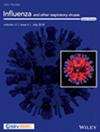Respiratory Syncytial Virus Incidence in Young Children in the United States: Impact of Methodologies and Patient Characteristics
Abstract
Objectives
This study aimed to estimate the incidence of respiratory syncytial virus (RSV) infections in US inpatient and outpatient settings.
Methods
We established national cohorts of privately insured children < 5 years (2011–2019) to estimate annual and seasonal incidences of lower respiratory tract infection (LRTI), RSV-LRTI, and RSV acute respiratory infection (RSV-ARI), stratified by age and high-risk conditions per American Academy of Pediatrics definitions. Sensitivity analyses varied episode definitions and assessed the impact of immunoprophylaxis and RSV under-ascertainment.
Results
Among 6,767,107 children, annual RSV-LRTI rates dropped with increasing age in both inpatient (7.9 for age < 1 year to 0.2 for age 4 per 1000 person-years) and outpatient settings (48.3 to 1.6). Most RSV-ARI (~80%–90%) was RSV-LRTI. RSV-LRTI accounted for > half of LRTI hospitalizations among infants (7.9 RSV-LRTI versus 14.7 LRTI) and for ~20% outpatient LRTI (48.3 versus 250.3), but this contribution declined with older age. Outpatient RSV-LRTI was > 5 times inpatient rates.
Inpatient RSV-LRTI rates dropped consistently with increasing gestational age (GA) (35.6 for GA < 29 weeks versus 7.6 for term infants), while outpatient rates were similar across GA groups (54.0 versus 51.6). Infants with Down syndrome had the highest RSV-LRTI rates, and any high-risk group had rates >2 times higher than healthy term infants. Across all strata, seasonal rates were > 2 annual rates. Modeling suggested that claims data captured 42% of all RSV episodes.
Conclusion
This study provides national, population-based estimates of medically attended RSV infections across age groups and high-risk strata. Results allow granular assessments of disease burden to guide recommendations for new RSV prevention strategies.


 求助内容:
求助内容: 应助结果提醒方式:
应助结果提醒方式:


